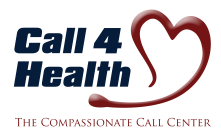Being a healthcare provider today means navigating a lot of challenges. One of the biggest challenges is utilizing remote patient monitoring (RPM) systems and remote nurse triage services to improve care delivery and outcomes. While RPM is a great way to monitor patient health from afar, it can also be tricky to get the hang of. Here are some common RPM challenges you might face and how to resolve them.
Setting Up RPM Systems
Setting up an RPM system is no small task. The software, hardware, and IT infrastructure can be tricky to get just right. You might also need to configure multiple systems and applications, like patient portals or third-party platforms.
The key to success is a clear plan with well-defined goals and objectives. To make the process smoother, consider outsourcing IT tasks to a technology partner who can help you set up and maintain your system.
Managing Data
RPM systems generate a lot of data, which can be difficult to manage. You must ensure the data is secure, accurate, and up-to-date as well as easily accessible when you need it.
For this, you need to consider a robust data management system that can handle the influx of data and provide easy access for your team. In addition, be sure to train your staff on the best practices for securely handling and storing data.
Billing and Reimbursement
The reimbursement landscape for remote patient monitoring services is still evolving. To ensure that you stay on top of the changing regulations, partner with a billing and reimbursement specialist who can help you with all your billing needs. They can provide you with the latest information on billing codes, help you maximize reimbursements, and identify areas that require additional attention.
Ensuring Compliance
It’s essential to ensure that your RPM system complies with all the relevant laws, regulations, and standards. You must ensure that the data is secure, your system is up-to-date, and the necessary policies and procedures are in place. The HIPAA Security Rule is especially important as it outlines the requirements for securing patient data.
The best way to ensure compliance is to work with an experienced partner who can provide guidance and support. They should be able to help you set up an effective risk management program and provide regular training to staff on privacy and security protocols.
Understanding these common RPM challenges and having the right strategies in place can ensure that your system works for you and helps improve patient care. If you need any help navigating the complexities of RPM, consider partnering with experienced professional nurse triage services like Call 4 Health to ensure that you have the support you need. We provide the tools and resources to help you make informed decisions and provide quality care for your patients confidently. Contact Call 4 Health and get the help you need to achieve your RPM goals.


 Founded after a personal, heart-wrenching incident more than 20 years ago, Call 4 Health has gone from solely offering after-hours answering services to being a top-rated, complete communications BPO for healthcare facilities throughout the country.
Founded after a personal, heart-wrenching incident more than 20 years ago, Call 4 Health has gone from solely offering after-hours answering services to being a top-rated, complete communications BPO for healthcare facilities throughout the country.